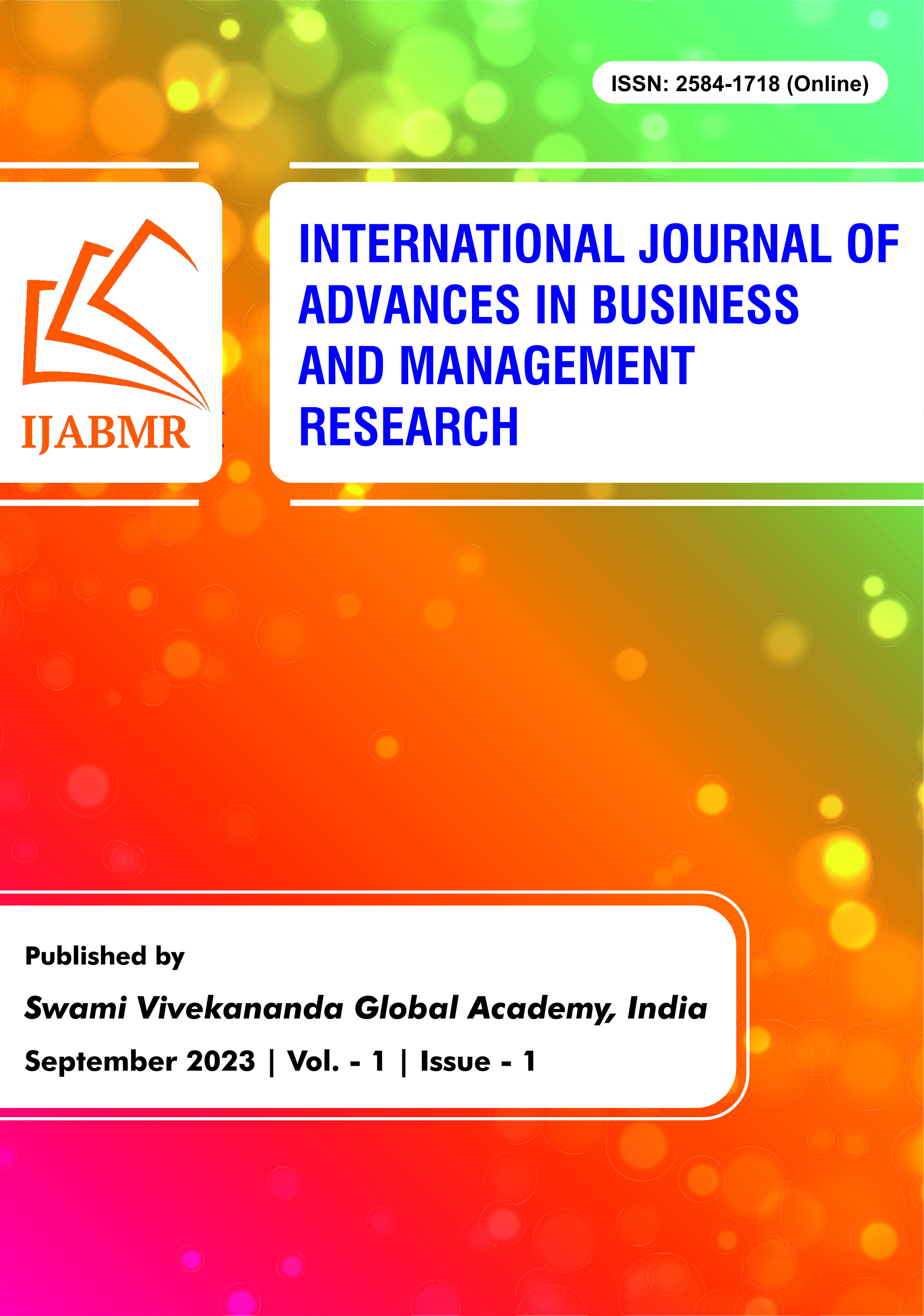Abstract
The field of Machine Learning (ML) has gained prominence as a powerful tool that has the capacity to greatly impact various aspects of business operations, decision-making processes, and overall organizational effectiveness. Machine learning algorithms and techniques play a crucial role in enabling the extraction of valuable insights from large volumes of data, thereby improving operational efficiency and informing the development of strategic decisions within business contexts. Machine learning (ML) is widely utilized in the business sector for a range of purposes, including predictive analytics, customer relationship management (CRM), fraud detection, and supply chain optimization. The implementation of machine learning (ML) poses a number of obstacles, including issues related to data integrity and reprocessing, the ability to interpret models, and ethical implications. The utilization of machine learning (ML) holds promise for generating substantial insights, optimizing operational processes, and improving decision-making in the realm of business. Consequently, this has the potential to facilitate growth, enhance operational efficiency, and increase customer satisfaction.
References
- Akbari M, Do TN. A systematic review of machine learning in logistics and supply chain management: current trends and future directions. Benchmarking: An International Journal. 2021 Mar 26;28(10):2977-3005. https://doi.org/10.1108/BIJ-10-2020-0514
- Abdel-Basset M, Gunasekaran M, Mohamed M, Chilamkurti N. A framework for risk assessment, management and evaluation: Economic tool for quantifying risks in supply chain. Future Generation Computer Systems. 2019 Jan 1;90(1):489-502. https://doi.org/10.1016/j.future.2018.08.035
- Muñoz-Villamizar A, Rafavy CY, Casey J. Machine learning and optimization-based modeling for asset management: a case study. International Journal of Productivity and Performance Management. 2022 Apr 8;71(4):1149-63. https://doi.org/10.1108/IJPPM-05-2020-0206
- Kim J, Kim M, Lee MS, Kim K, Ji S, Kim YT, Park J, Na K, Bae KH, Kyun Kim H, Bien F. Wearable smart sensor systems integrated on soft contact lenses for wireless ocular diagnostics. Nature communications. 2017 Apr 27;8(1):14997. https://doi.org/10.1038/ncomms14997
- Shahbazi Z, Byun YC. A procedure for tracing supply chains for perishable food based on blockchain, machine learning and fuzzy logic. Electronics. 2020 Dec 29;10(1):41. https://doi.org/10.3390/electronics10010041
- Pelliccia A, Sharma S, Gati S, Bäck M, Börjesson M, Caselli S, Collet JP, Corrado D, Drezner JA, Halle M, Hansen D. 2020 ESC Guidelines on sports cardiology and exercise in patients with cardiovascular disease: The Task Force on sports cardiology and exercise in patients with cardiovascular disease of the European Society of Cardiology (ESC). European heart journal. 2021 Jan 1;42(1):17-96. https://doi.org/10.1093/eurheartj/ehaa605
- Leo M, Sharma S, Maddulety K. Machine learning in banking risk management: A literature review. Risks. 2019 Mar 5;7(1):29. https://doi.org/10.3390/risks7010029
- Huerta-Soto R, Ramirez-Asis E, Tarazona-Jiménez J, Nivin-Vargas L, Norabuena-Figueroa R, Guzman-Avalos M, Reyes-Reyes C. Predictable inventory management within dairy supply chain operations. International Journal of Retail & Distribution Management. 2023 May 23. https://doi.org/10.1108/IJRDM-01-2023-0051
- Ahmad AK, Jafar A, Aljoumaa K. Customer churn prediction in telecom using machine learning in big data platform. Journal of Big Data. 2019 Dec;6(1):1-24. https://doi.org/10.1186/s40537-019-0191-6
- Chalapathi KV, Song JI, Prabhakar MN. Impact of surface treatments and hybrid flame retardants on flammability, and thermal performance of bamboo fabric composites. Journal of Natural Fibers. 2022 Jun 3;19(6):2129-39. https://doi.org/10.1080/15440478.2020.1798849
- Sadgali I, Sael N, Benabbou F. Fraud detection in credit card transaction using neural networks. In Proceedings of the 4th international conference on smart city applications 2019 Oct 2 (pp. 1-4). https://doi.org/10.1145/3368756.3369082
- Jagdale RS, Shirsat VS, Deshmukh SN. Sentiment analysis on product reviews using machine learning techniques. In Cognitive Informatics and Soft Computing: Proceeding of CISC 2017 2019 (pp. 639-647). Springer Singapore. https://doi.org/10.1007/978-981-13-0617-4_61
- Theissler A, Pérez-Velázquez J, Kettelgerdes M, Elger G. Predictive maintenance enabled by machine learning: Use cases and challenges in the automotive industry. Reliability engineering & system safety. 2021 Nov 1;215:107864. https://doi.org/10.1016/j.ress.2021.107864
- Carbonneau R, Vahidov R, Laframboise K. Machine learning-based demand forecasting in supply chains. International journal of intelligent information technologies (IJIIT). 2007 Oct 1;3(4):40-57. https://doi.org/10.4018/jiit.2007100103















